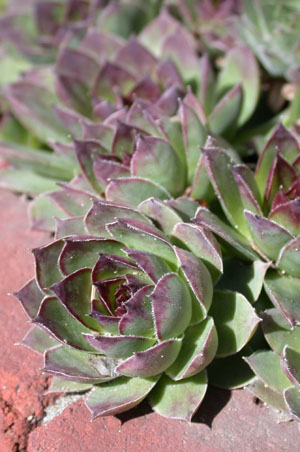Sempervivum tectorum, literally “the ever-living one of the roofs,” was a magical protection against lightning, and the storms that were and are common at midsummer. Bad weather, and the consequent destruction of crops, was attributed in ancient and medieval times to the activities of witches and demons. So long associated with human habitation that it no longer exists in its wild form, houseleek was identified as a plant found on the tops of walls and on roof tiles by Theophrastus in the fourth century B.C., and Dioscorides records that it was deliberately planted by some on the tiles above their houses. The Romans called the plant barba Jovis (Jove’s, or Jupiter’s, beard) after Jupiter, wielder of lightning bolts. Jupiter???s Germanic equivalent was Thor, and one of the plant???s German names is Donnerbart, or Thunderbeard. The famous ninth-century edict, the Capitulare de Villis, in which the useful plants to be grown on the estates of the emperor Charlemagne are listed, specifies that the gardener is to grow the barba Jovis on the imperial roofs in order to protect the buildings from fire. One of the Old English names for Sempervivum is hamwyrt, or “homestead plant.” Thatch made of straw or reed was in even more in need of houseleek???s protection than clay tiles (Geoffrey Grigson, The Englishman???s Flora, 1951).
Houseleek is commonly grown on roofs throughout Great Britain to this day, whether or not any credence is put in its power to avert lightning. I have had an English visitor inform me that in her locale it is planted to keep away witches!

